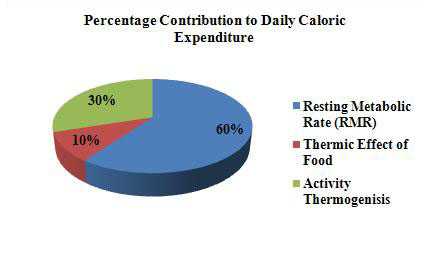Don’t Exercise To Lose Weight; Eat To Lose Weight

“I always believed if you take care of your body it will take care of you.”- Ted Lindsay
Whenever anyone is trying to lose weight, what’s the first thing that comes to mind?
For me it’s people buying gym memberships at the beginning of the year because they think without working out they aren’t going to lose any weight.
This is not bad logic but really it’s more about the food you’re eating than the amount of exercise performed.
While having a regular exercise routine is essential for a healthy life and minimizing the risk for early death, it’s not going to be the most important factor for managing body composition.
It’s all about the diet, having control over how much food we consume is going to give us the greatest advantage in managing body weight and fat percentage.
I believe one of the biggest reasons people fail is because they quit within the first month of starting the gym.
Gym members know how crowded it is in January, but wait until March and it always thins out.
My thoughts about this repeating cycle is that people think they have to exercise hard all the time to make progress leading to early burn out and defeat.
While exercise is vital for a healthy life and body weight it doesn’t actually burn as many calories as most people might think.
With this idea in mind I think it would give a lot of beginners a little more freedom to start slow and build a habit.
Losing weight doesn’t have to consist of five days a week workouts from the very beginning where soreness and fatigue are inevitable.
Just find ways to stay in the gym for at least six months, it doesn’t have to be consistent to continue seeing progress, as long as you keep your food under control you will see results.
The greatest calorie burner is our metabolism

Metabolism can be categorized using the terms resting metabolic rate or basal metabolic rate.
The difference is basal metabolic rate would describe the number of calories being burned first thing in the morning but before beginning to move around.
While resting metabolic rate refers to a state in which you’re not currently active but have been at some point during the day.
As you can see from the chart above the largest portion of the calorie expenditure does not relate to any physical activity at all.
So when you consider the amount of calories burnt while you sleep is probably pretty close to your workout it adds some perspective on why putting all the emphasis on exercise may not be the most efficient path.
You may be wondering how that is even possible, firstly the highest calorie burning organ in the body is the liver, muscle is actually ranked number five.
So while a workout may last around an hour there’s still twenty three hours left in the day, of which six to eight of them will be spent asleep.
During sleep our bodies are actually working quite hard because we are in the deepest states of recovery which takes energy to repair damaged tissues and optimize our immune system.
Every reaction that takes place requires energy, the product of energy use is measured in calories, more calories burnt means more reactions taking place.
Going back to the liver, this large organ helps with the conversion of the foods we eat into usable forms of energy and plays the most important role in detoxifying harmful substances and excreting them from the body.
You can imagine this entire process is filled with reactions, in this case they are taking place whether we are moving or not.
Now consider the brain and how much energy is being consumed both while actively engaged in an important task or in the moments just lost in thought. All demand energy, albeit to varying degrees.
According to Robert Sapolsky, Professor at Stanford University, chess players can burn up to 6000 calories a day playing in a tournament.
So when considering the impact of physical exertion in this scenario that number would obviously increase but only by the hundreds.
Then we have two other organs that are constantly working, the heart and kidneys. At number five on the list we get to the muscles, but we don’t even have to think about intense exercise for its benefits.
The effects of NEAT
NEAT stands for non-exercise activity thermogenesis, which accounts for all the physical activity we perform on a daily basis that is not done intentionally for exercise.
This includes every time we sit, stand, walk, take the stairs, and even fidget for those who have a hard time sitting still.
As it relates to calories burned per day, deliberate exercise accounts for a smaller portion of the physical activity category.
For individuals who work very sedentary jobs the benefit of NEAT activities are lower, however, due to the congitive demand they are still burning a lot of calories per day. Think back to those chess players.
So don’t let the excuse of not having enough time, or being too tired after work keep you from moving towards your weight loss goals.
Exercise is a bonus that becomes very effective when done consistently and with the intention of building muscle.
Leverage the concept of NEAT into your life to get the most out of your physical activity when you’re having a harder time making it to the gym.
In reality, as long as we are awake and upright we are performing actions that require muscles to contract, the heart to beat, and the lungs to breathe.
All of these internal mechanisms require energy, as this energy is being used calories are being burnt.
Just as it takes the burning of gasoline to get from one side of the city to the other the body needs to use fuel to keep us alive.
Focus on what you can control and stay the course.
What’s the point?
Exercise is a must for a healthy lifestyle, and the maintenance of a healthy body weight that is composed of mostly lean body mass.
The title may be a little misleading but in reality the diet will be the biggest lever when it comes to managing body weight.
Whether the goals are to lose weight or gain muscle the food we consume is at the top of the list.
Of course adding exercise to the daily routine without changing anything in the diet will result in physical changes but they won’t be drastic or long lasting.
Controlling calories will make the biggest impact on body composition. Even a diet full of Twinkies and McDonalds will result in weight loss if less calories are eaten independent of physical activity.
The majority of calories burnt by the body happen whether we move or not.
Each person’s basal metabolic rate can be calculated online using height, weight, age, and activity level.
However, the number you get initially implies no physical activity was performed, roughly speaking 60% of all calories burnt in a day would remain constant even if we never even got out of bed.
This is a valuable concept because exercise is always a bonus when it comes to calories burnt.
Exercise is great for building muscle, getting stronger, improving our cardiovascular health, reducing our risk of diseases like diabetes, and much more.
It will even be an important factor for maintaining a normal body weight but controlling the amount of calories we eat on a daily basis is always number one.
So don’t let a consistent exercise routine distract the focus from the most foundational element to healthy living and physique development.
To get bigger train hard and eat more calories, to get smaller train hard and eat less calories. It’s all about the calories in and the calories out, when you control the intake you set yourself up for success.
Weight loss doesn’t happen quickly, it should happen very gradually over time. Keep exercise consistent and manipulate the nutrition at will to chip away at your specific goals.
Summary of main points
- While exercise is vital for a healthy life and body weight it doesn’t actually burn as many calories as most people would think.
- NEAT stands for non-exercise activity thermogenesis, which accounts for all the physical activity we perform on a daily basis that is not done intentionally for exercise.
- The greatest calorie burner comes from our resting metabolism.
- Exercise is a must for a healthy lifestyle, and the maintenance of a healthy body weight that is composed of mostly lean body mass (muscles).
- To get bigger train hard and eat more calories, to get smaller train hard and eat less calories. It’s all about the calories in and the calories out, control the in and you’re on your way.
Call to action
Take a look at the amount of calories you eat in a day and keep track of your body weight.
Is your weight consistently going up or down? How does it match up with your total calorie intake for the day?
The easiest method is to start there and adjust the calories depending on what the scale is telling you.
If your activity is pretty consistent this one change will start to move the needle in the direction you want.
Resources:
Bi X, Forde CG, Goh AT, Henry CJ. Basal Metabolic Rate and Body Composition Predict Habitual Food and Macronutrient Intakes: Gender Differences. Nutrients. 2019 Nov 4;11(11):2653. doi: 10.3390/nu11112653. PMID: 31689964; PMCID: PMC6893862.
Cologne, Germany: Institute for Quality and Efficiency in Health Care (IQWiG); 2006-. How does the liver work? 2009 Sep 17 [Updated 2016 Aug 22]. Available from: https://www.ncbi.nlm.nih.gov/books/NBK279393/
McMurray RG, Soares J, Caspersen CJ, McCurdy T. Examining variations of resting metabolic rate of adults: a public health perspective. Med Sci Sports Exerc. 2014 Jul;46(7):1352-8. doi: 10.1249/MSS.0000000000000232. PMID: 24300125; PMCID: PMC4535334.
Wang Z, Ying Z, Bosy-Westphal A, Zhang J, Heller M, Later W, Heymsfield SB, Müller MJ. Evaluation of specific metabolic rates of major organs and tissues: comparison between men and women. Am J Hum Biol. 2011 May-Jun;23(3):333-8. doi: 10.1002/ajhb.21137. Epub 2010 Dec 22. PMID: 21484913; PMCID: PMC3139779.
Share
Related Posts
Quick Links
Legal Stuff
Social Media

